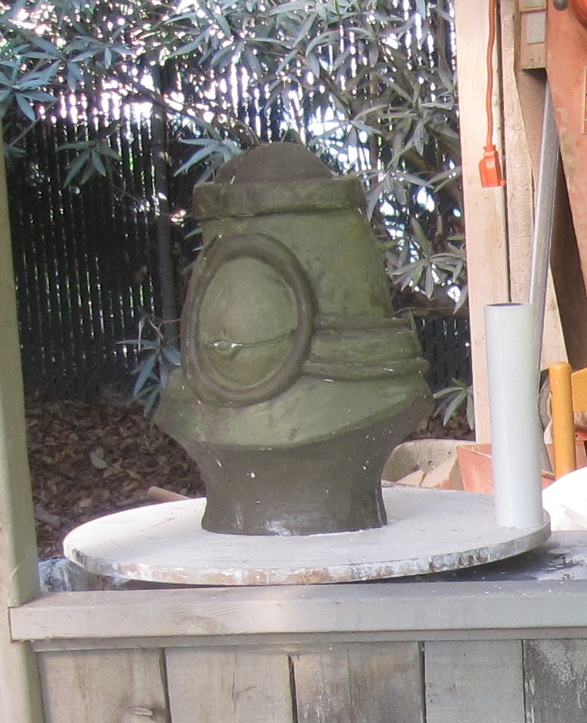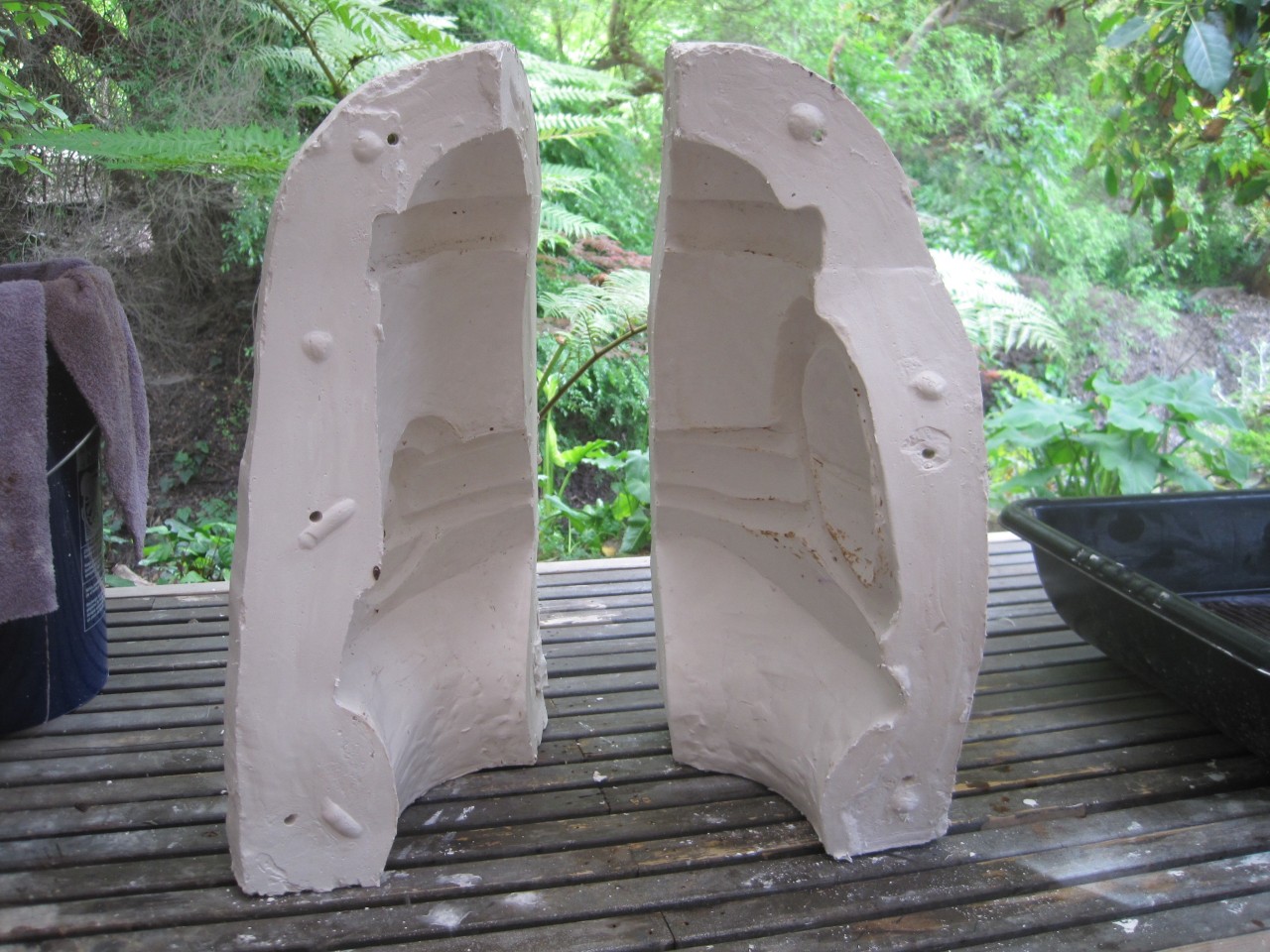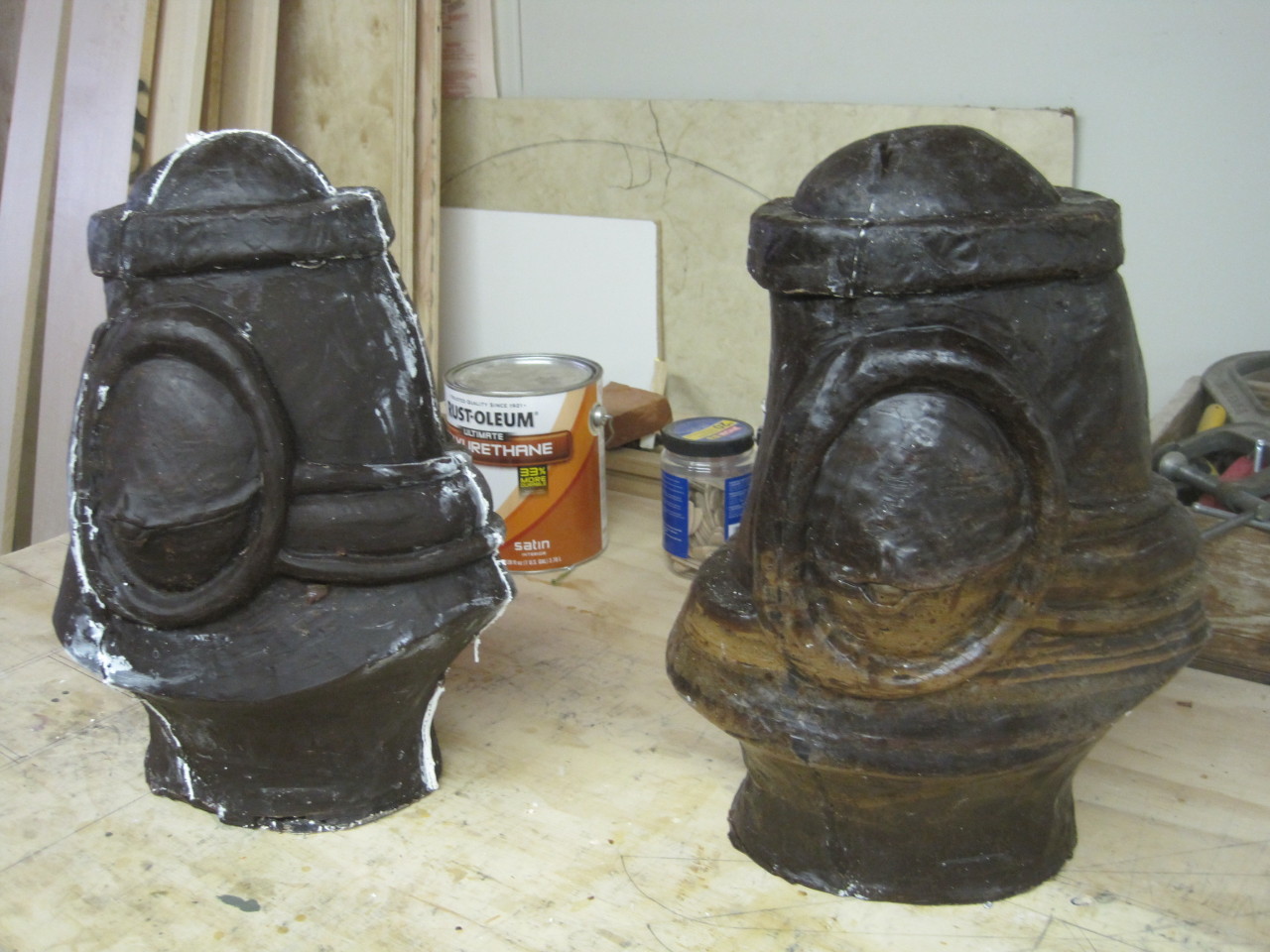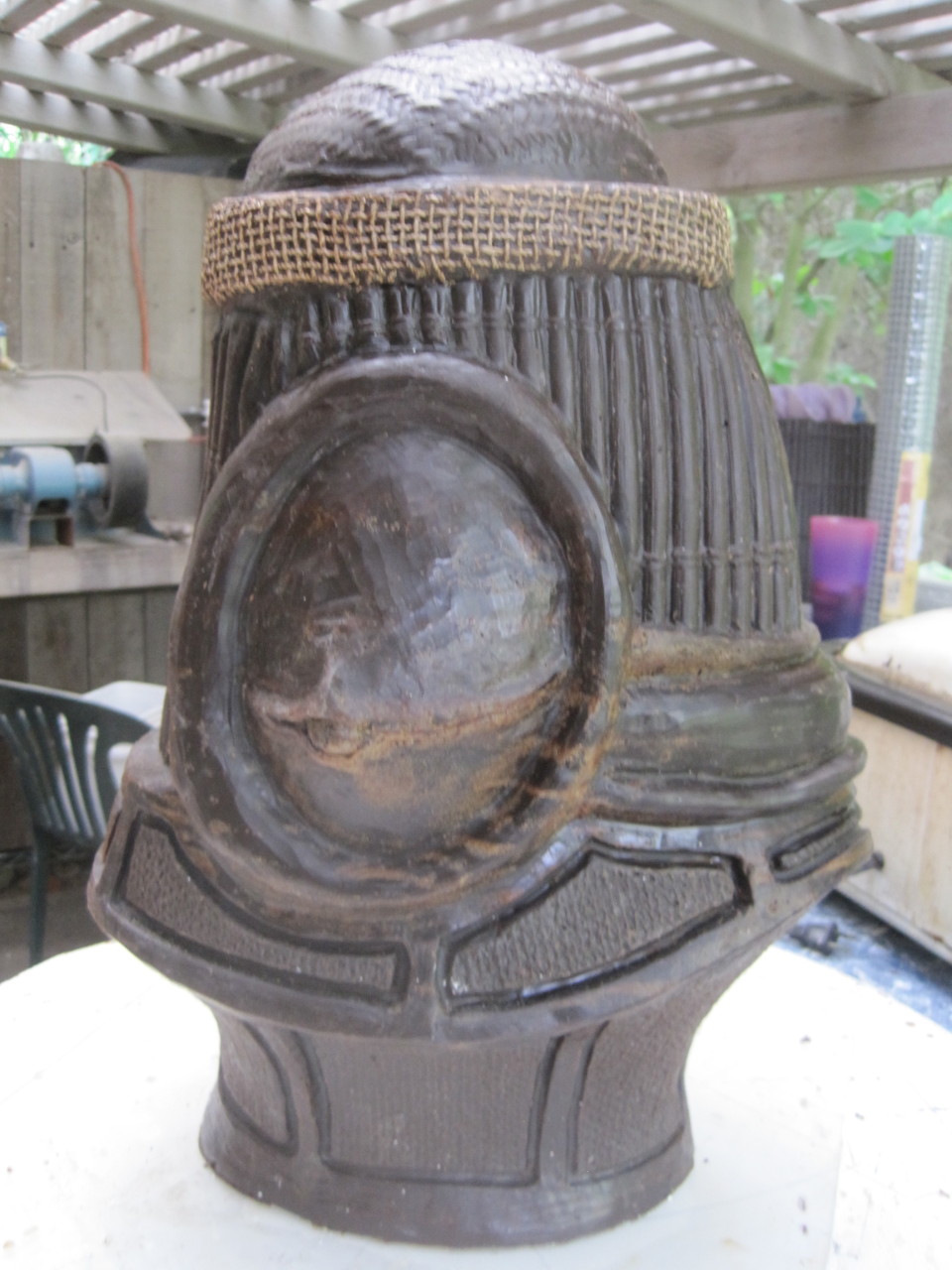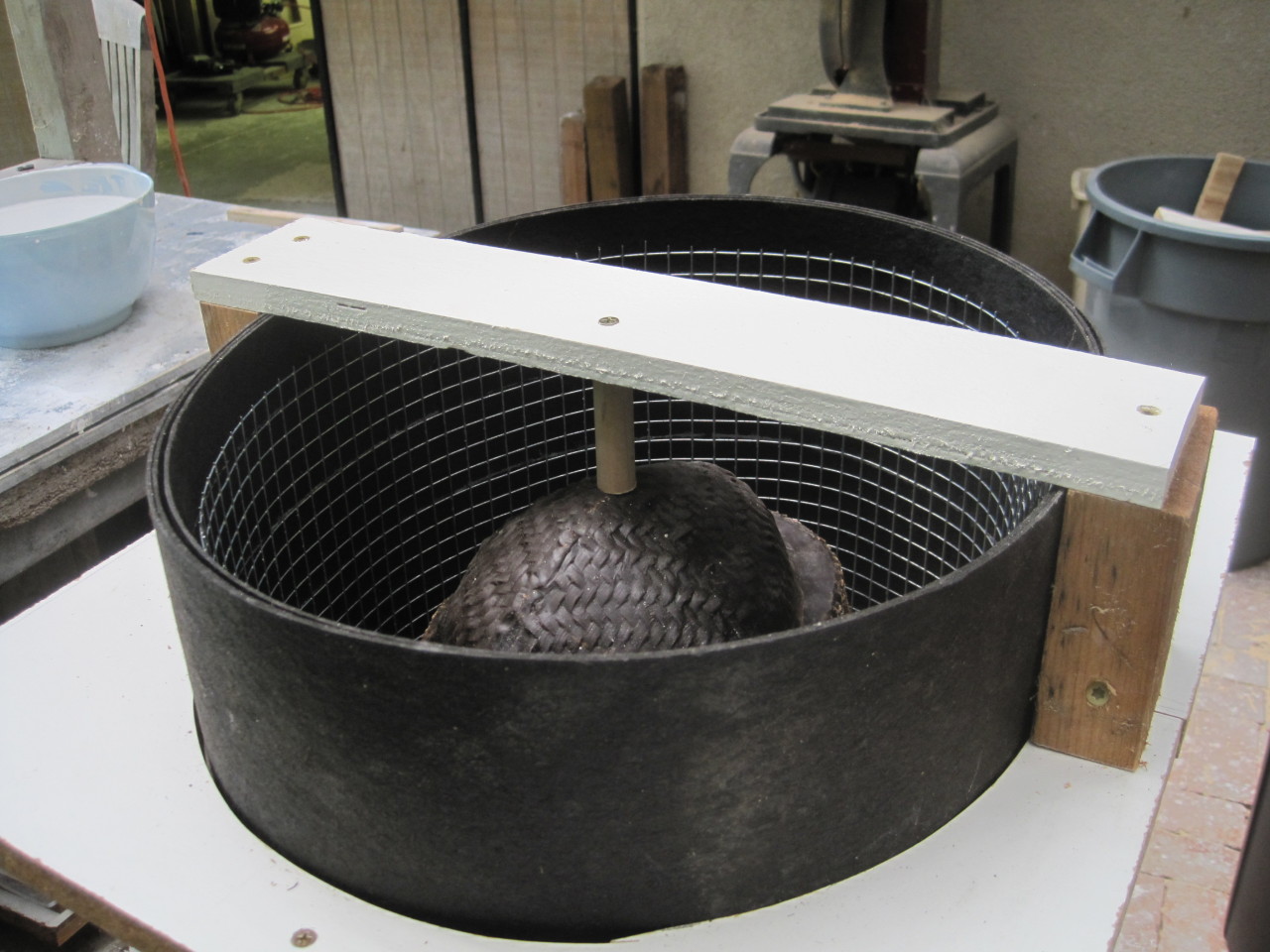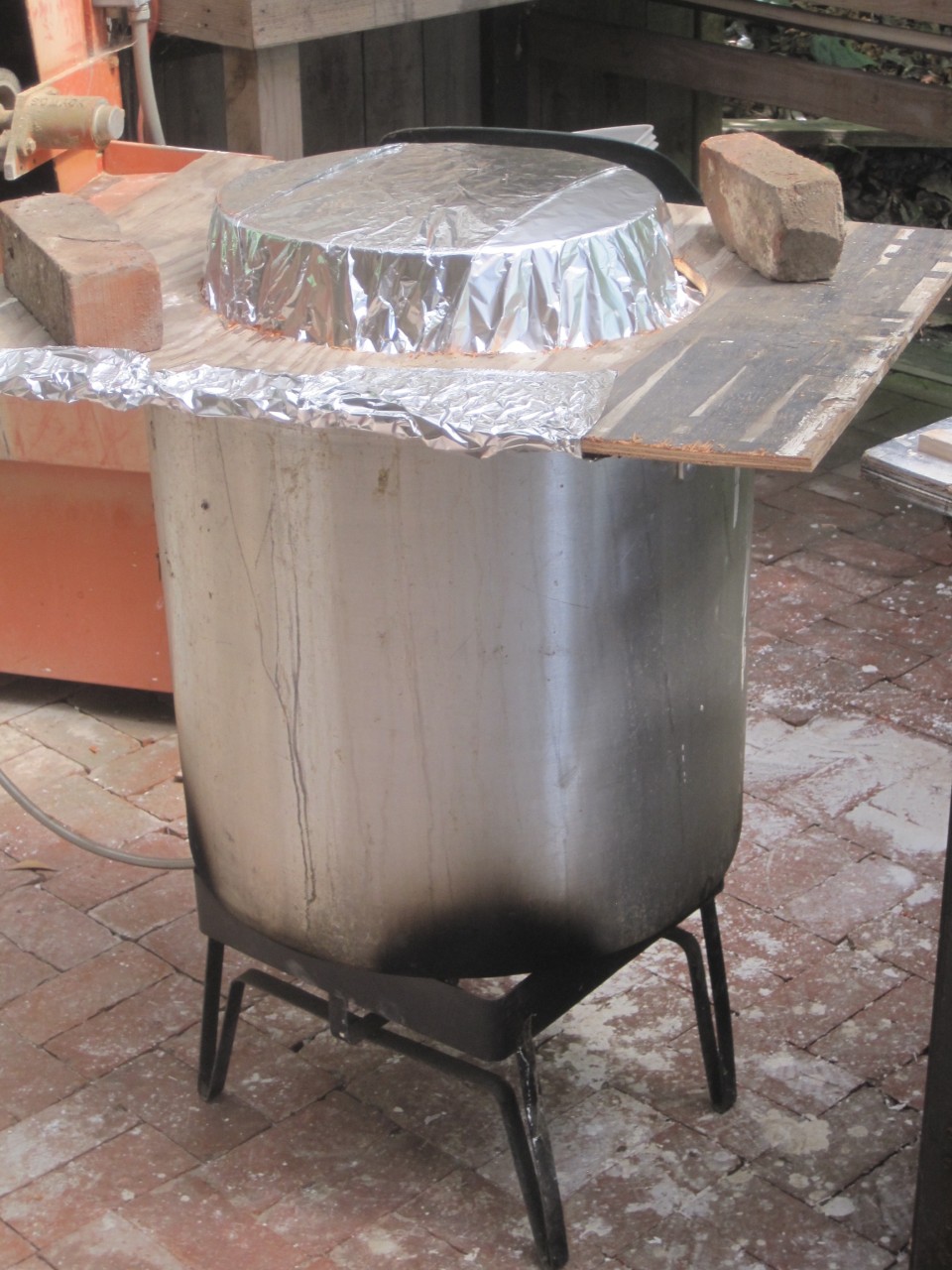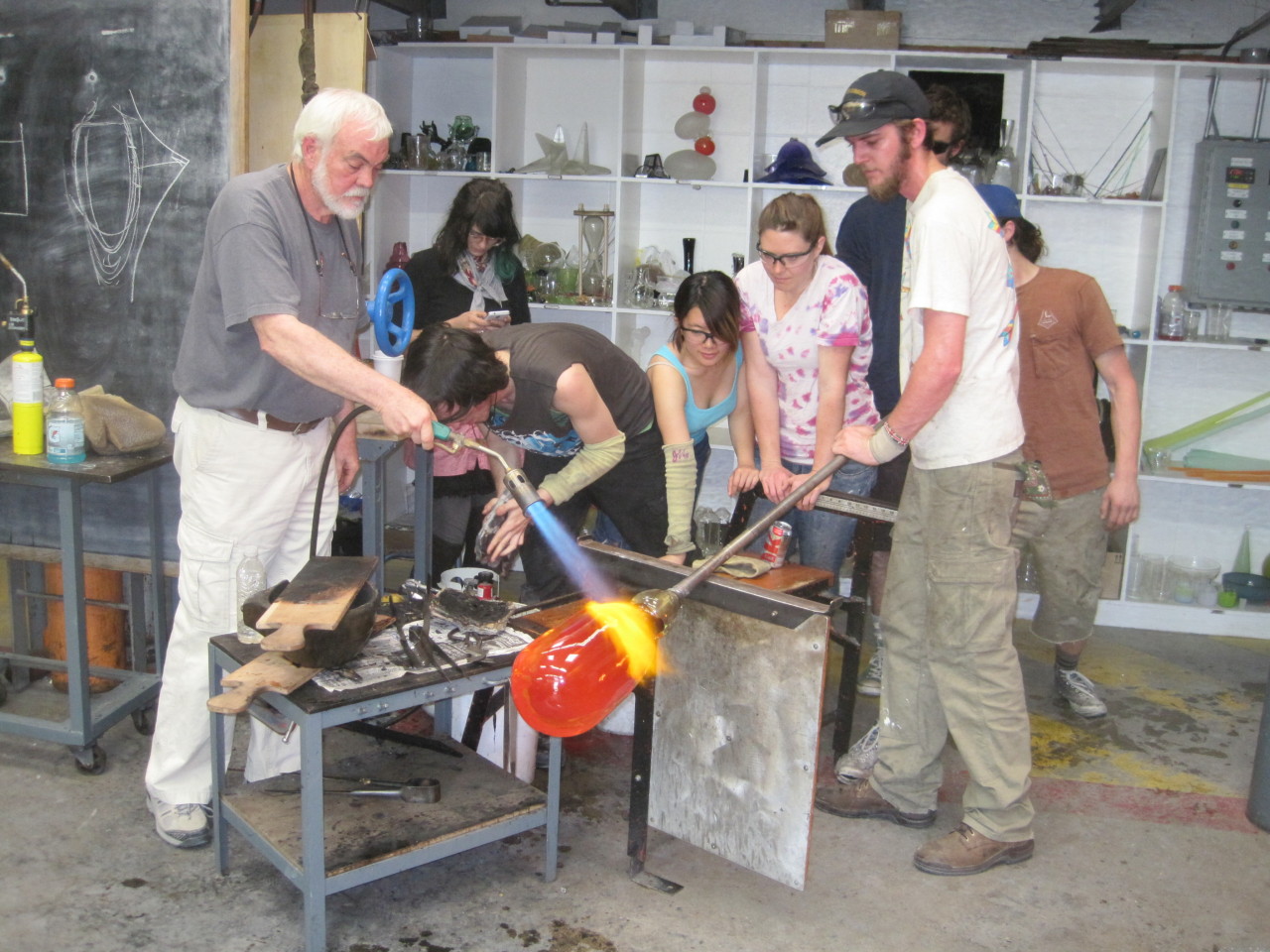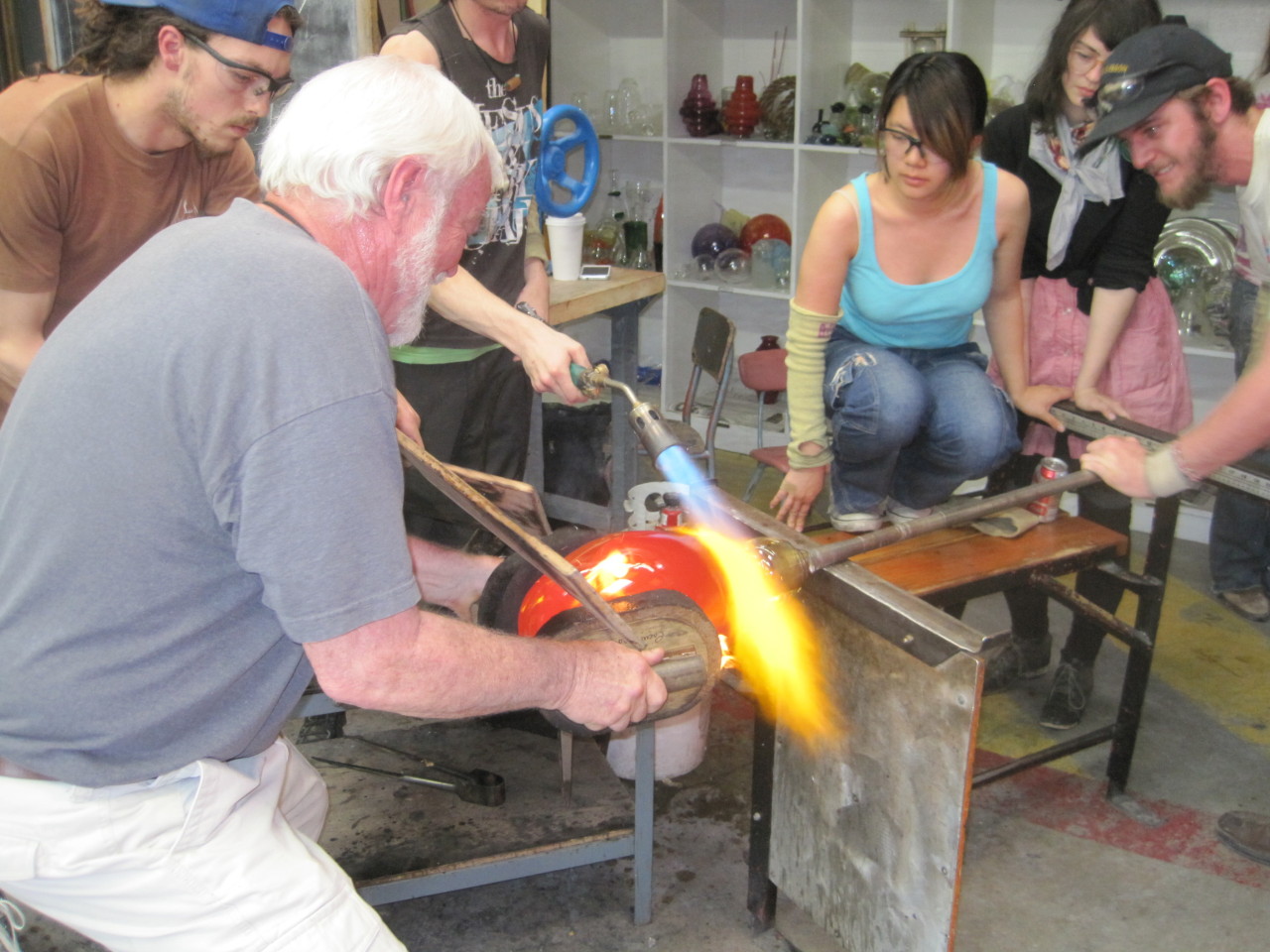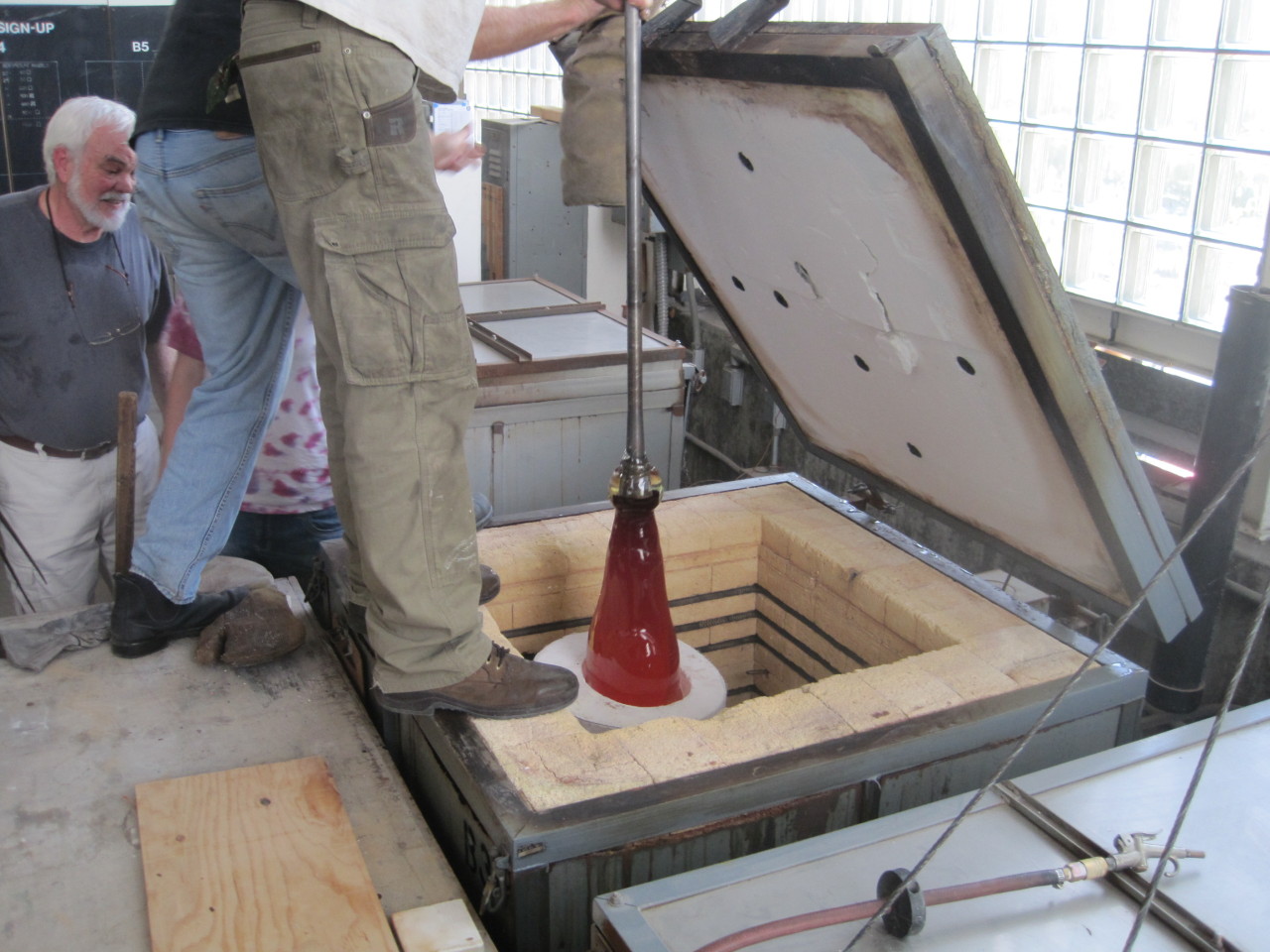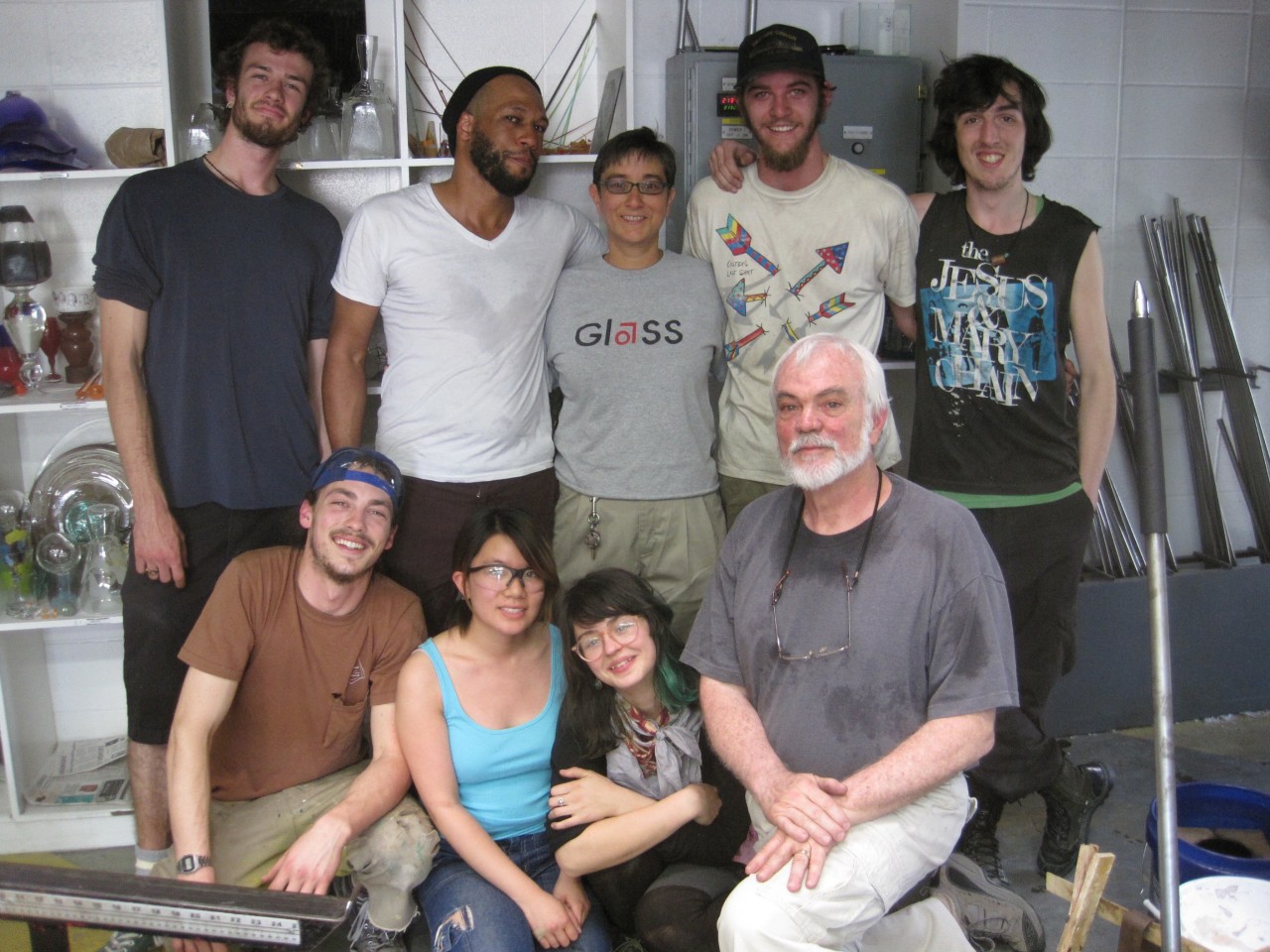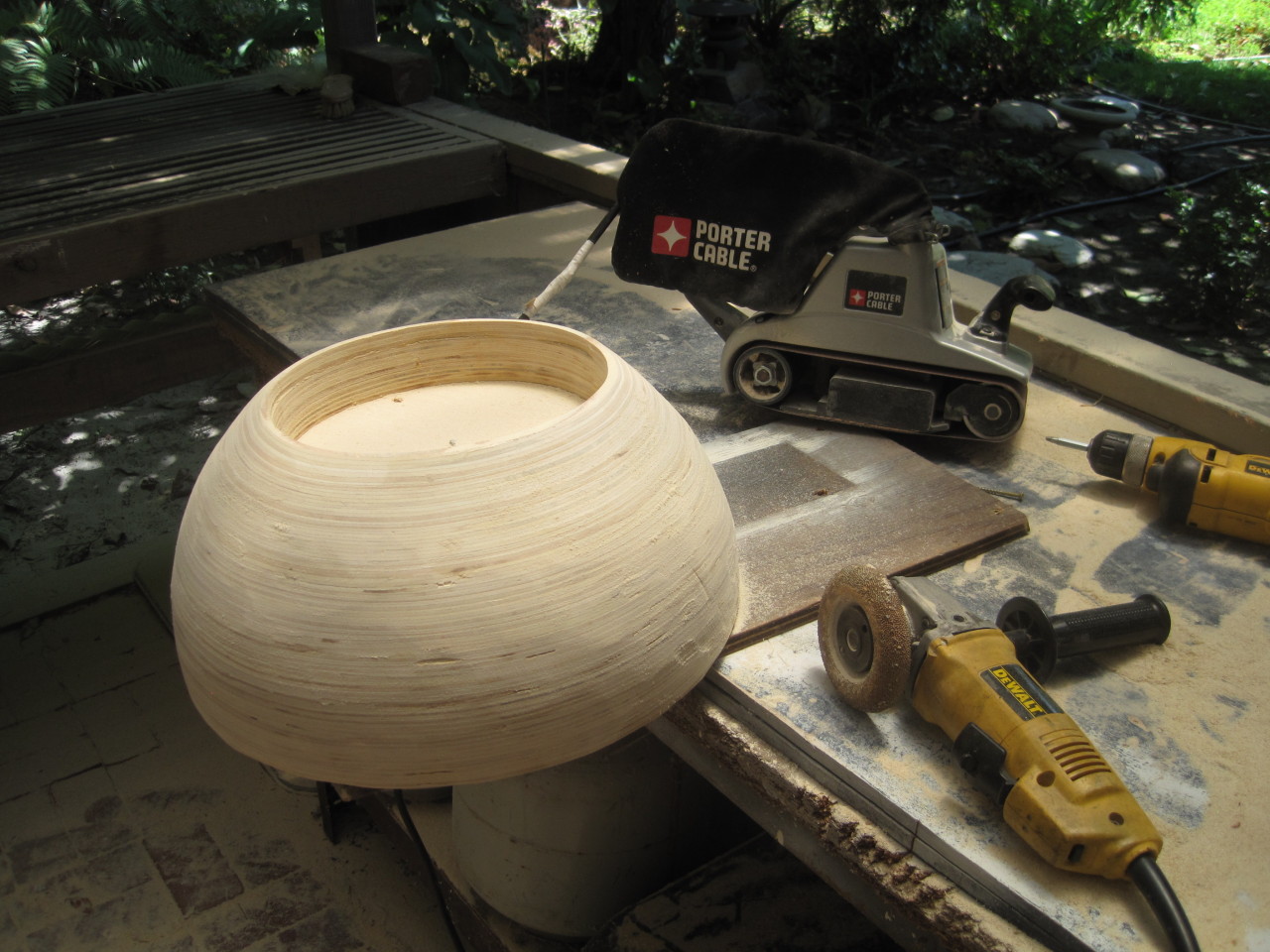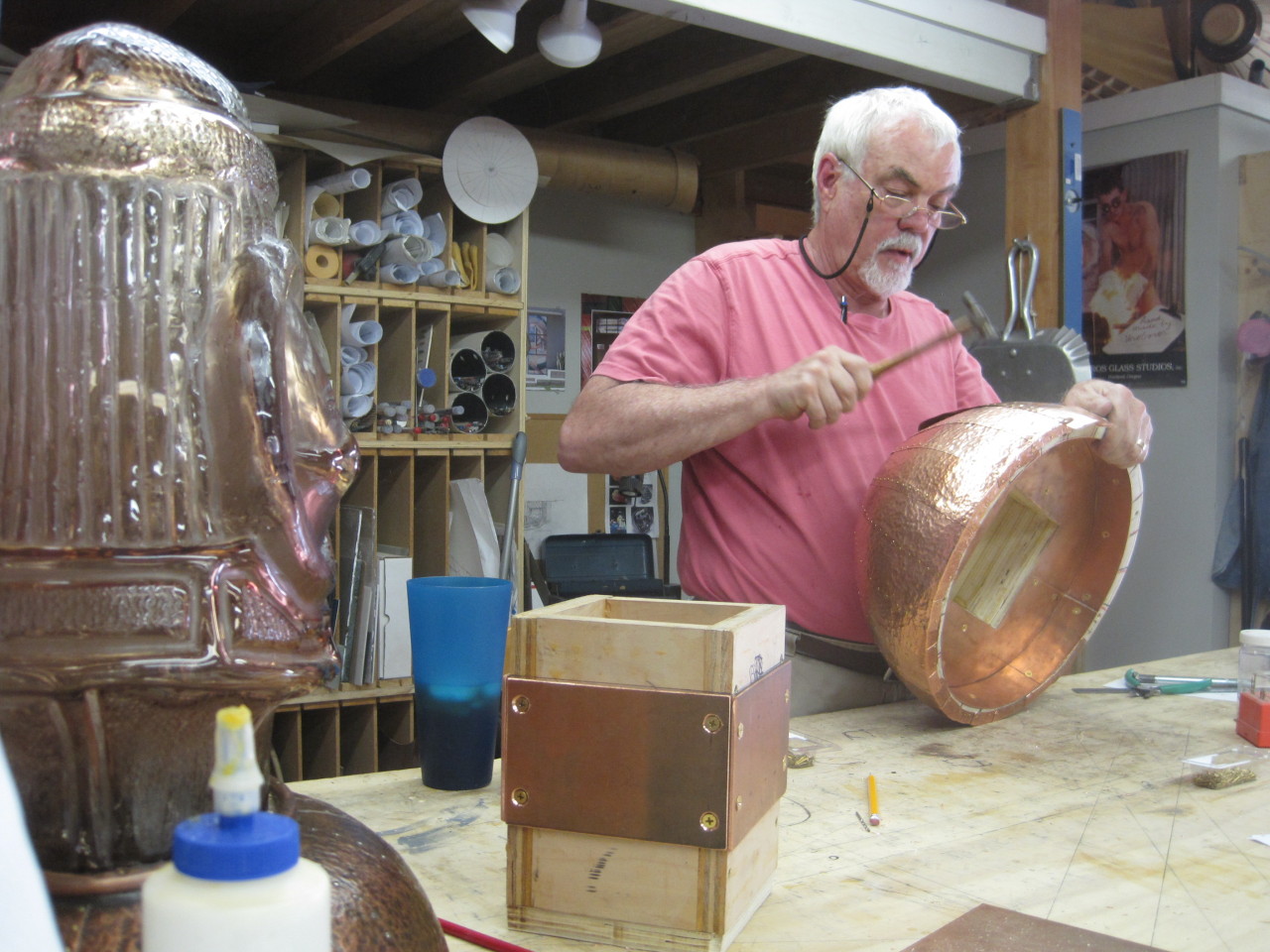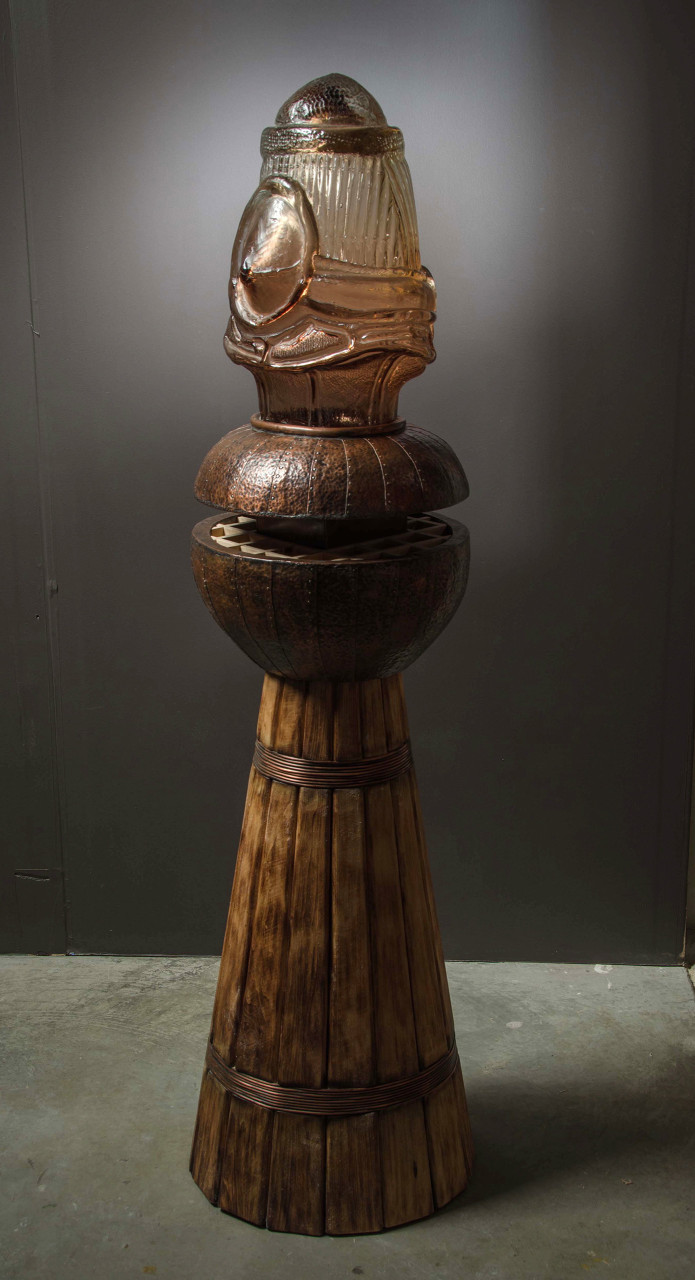Making Kuwa
You can read about my discovery of the ancient Japanese tool that inspired the drawing for Kuwa in the Portfolio section of this site. I was invited to visit my Alma Mater, California College of Art in Oakland and I decided to try to “hot mold blow” a big 3-D version of the sketch.
I first made a clay model from the drawing and then made a three piece, bolt-together plaster mold from the clay. I then cast a couple of wax “blanks” and added fiber textures using burlap. The wax model was then invested in a one-piece refractory (plaster and sand) mold and the wax was steamed out. I drove the 100+ pound mold to Oakland and we loaded it into a kiln and heated it slowly over night to about 1000 degrees.
The students in the glass program assisted me in gathering about thirty pounds of glass and shaping the bubble to just fit into the opening at the top of the mold. With plenty of help,
the bubble was heated to “barely controllable” and slowly lowered into the mold. The kiln was still at 1000 degrees so this required lots of assistance and heat shielding! The bubble was blown into the mold cavity using lung power and a compressed air hose. Many thanks to CCA Professor, Pamina Traylor and her students for this, one of the largest pieces I have ever blown! The beauty of this process is you get almost as much surface detail in the finished piece as you would by casting a solid piece, but depending on the thickness of the bubble, the wall thickness in the finished piece is only about 1/4 to 1/2 inch and the weight is much, much less!
I went back to LA with the piece in the annealing oven at CCA. What a treat to have it delivered, in great condition, to my office at Cal State Fullerton a few weeks later (thank you Matt Szosz!). I made the rest of the piece by laminating and shaping plywood, and clad the whole thing with thick copper sheet and brass nails.
